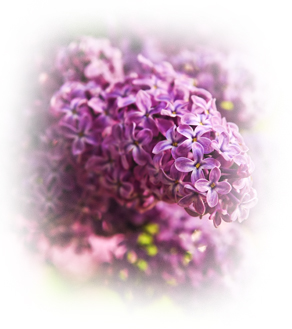Lilac
|
|
| Syringa vulgaris
Oleaceae
The word Syringa is derived from the Greek “syrinx” referring to a tube or any long cylinder shaped object. The individual flower resembles a long tube. The word lilac is an old English word derived from the Arabic “laylak” and Persian “milak” meaning blue. In the language of flowers lilacs symbolizes memory and humility. White lilacs symbolize innocence. |
|
|
In the Garden
Requires a period of vernalization (dormancy and cold) to bloom therefore will not bloom in warmer climate zone 7+. In shrub form they can reach 15’. The leaf shape is ovate. Individual flowers have four petals and are clustered together to form a panicle. Flowers range in colour from white to purple. They bloom on last year’s wood; deadheading and pruning is done right after they bloom before they seed. Lilacs tend to flower profusely in alternate years. The cultivar Preston Lilac was the result of the cross between S. villosa and S. reflexa developed here in Ottawa at the Experimental Farm in the 1920’s by Isabella Preston. Lilacs by their nature are astringent. There is no need to crunch the flower to release the flavor. There is no way to extract their perfume. In the great perfume houses the lilac scent is purely derived from other substances both synthetic and natural. |
|



